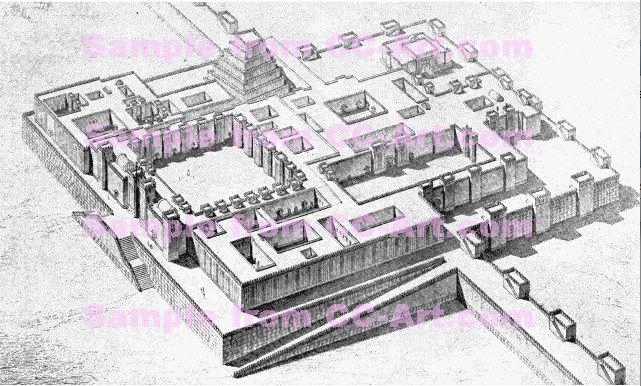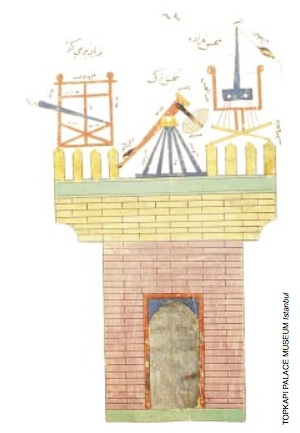“Each advance in the technology of weapons has led to more elaborate methods of defense against them” -Horst de la Croix, from Military Considerations in City Planning
As old as humanity itself is the human’s need for external protection- in the form of a cave, a hut or a castle, but it was with the shift from a hunter-gatherer lifestyle to an agricultural society that defenses began to take on permanent, monumental forms. This transition to a sedentary lifestyle occurred between 10,000 and 7,000 BCE. With this shift, we see the first evidence of monumental defenses- the city of Jericho. Located in the Fertile Crescent area, Jericho is the first known city to have implemented a rock cut ditch, a stone wall, and a high stone tower. This pattern of ditch, wall, and tower remained the norm through the invention of gunpowder, however, within these bounds, the shape of defenses evolved through the ages.
Regarding these changes, de la Croix states, “Any change in weaponry or siege methods had to be countered by corresponding changes in the design of the defenses.” We see the first evidence of this statement in the pre-classical antiquity stage, where the main threats to the city were battering rams, and the escalation of city walls. In response to these threats, walls were both thickened and heightened, and the central citadel was introduced.
 The palace of Sarpedon II, an example of a pre-classical Assyrian military city
The palace of Sarpedon II, an example of a pre-classical Assyrian military city
On the Middle Ages following the fall of the West Roman Empire, De la Croix states that “Frequent changes of local rulers and the complete lack of a central governing authority created and atmosphere of turmoil and insecurity that is perhaps best reflected in the almost incredible proliferation of castles all over Europe.” During this time, 20,000 castles were built in Italy alone. The walls of these castles to people at that time, signaled safety from a turbulent and dangerous countryside, and as a result, De la Croix asserts, they became “symbols of a free society of citizens.”
Enter the trebuchet. With its ability to launch stones weighing between 300 and 1300 kilograms, the siege engine brought about drastic change in fortifications and siege warfare itself. In “Trebuchet: A Study in Cultural Diffusion,” Chevedden claims: “medieval fortifications and defensive planning began a process of revolutionary change shortly after 1200 in order to counter the greater destructive power of the counterweight trebuchet and to exploit this new artillery for use in the defense of strongpoints.” Regarding the use of the trebuchet, he adds, “For the first time, artillery was used to breach enemy fortifications, not merely to support ‘escalades or siege-tower assaults by harassing defenders and neutralizing their artillery,’ as had been the role of ordnance in earlier siege operations”
The trebuchet’s before unseen destructive force caused engineers to thicken walls, round out towers, and to redesign fortifications so that they could employ trebuchets for defense. Saladin, between 1196 and 1218 built towers mounted with massive trebuchets, which hypothetically would use their height advantage to take out opposing siege engines.

A rendition of Saladin's defensive trebuchets
Some other points of influence:
- The counterweight trebuchet represents the first significant mechanical utilization of gravitational energy. This development paved the way for other gravitational technologies, such as the pendulum clock.
- Jordanus de Nemore, a medieval mathematician and scientist was inspired by the hinged counterweight trebuchet to study the science of weights, eventually deducing that work is proportional to weight and vertical distance. His book, Elementa super demonstrationem ponderum is said to have been incorporated in Galileo’s analysis of trajectory of cannon shot.
-“The word ‘engineering’ is intimately related to trebuchets. In Latin and the European vernaculars, a common term for the trebuchet was ‘engine’ (from ingenium, ‘an ingenious contrivance’), and those who designed, made, and used them were called ingeniators."
-"The emergence of the centralized state owes something to this machine," according to Joseph Needham and Robin Yates, "due to the increased resource mobilization by the state that the new technology necessitated"
Part Three: Breaking Down Barriers
Back to The Catapult
